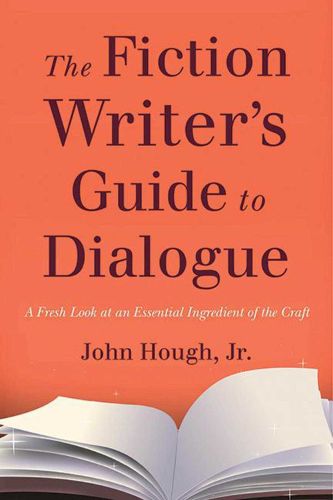Readings Newsletter
Become a Readings Member to make your shopping experience even easier.
Sign in or sign up for free!
You’re not far away from qualifying for FREE standard shipping within Australia
You’ve qualified for FREE standard shipping within Australia
The cart is loading…






Dialogue is often overlooked as a necessary and potent instrument in the novelist’s repertoire. A novel can rise or fall on the strength of its dialogue. Superb dialogue can make a superb novel. F. Scott Fitzgerald wrote, Action is character. George V. Higgins said, Dialogue is character. They were both right, because dialogue is action. It comprises much, if not all, of the clarifying drama of any novel. How much physical action can there be in 300 pages, even in a crime novel or a thriller? And all conflict, even physical, begins as dialogue. Hough explains how dialogue can reveal a character’s nature as well as his or her defining impulses and emotions. He says there must be tension in every colloquy in fiction, and shows the reader ways to achieve it. Hough illustrates his precepts with examples from his own work and from that of the best modern writers of dialogue, including Cormac McCarthy, Kent Haruf, Joan Didion, Annie Proulx, Lee Smith, Elmore Leonard, George V. Higgins, William Kennedy and Howard Frank Mosher.
$9.00 standard shipping within Australia
FREE standard shipping within Australia for orders over $100.00
Express & International shipping calculated at checkout
Dialogue is often overlooked as a necessary and potent instrument in the novelist’s repertoire. A novel can rise or fall on the strength of its dialogue. Superb dialogue can make a superb novel. F. Scott Fitzgerald wrote, Action is character. George V. Higgins said, Dialogue is character. They were both right, because dialogue is action. It comprises much, if not all, of the clarifying drama of any novel. How much physical action can there be in 300 pages, even in a crime novel or a thriller? And all conflict, even physical, begins as dialogue. Hough explains how dialogue can reveal a character’s nature as well as his or her defining impulses and emotions. He says there must be tension in every colloquy in fiction, and shows the reader ways to achieve it. Hough illustrates his precepts with examples from his own work and from that of the best modern writers of dialogue, including Cormac McCarthy, Kent Haruf, Joan Didion, Annie Proulx, Lee Smith, Elmore Leonard, George V. Higgins, William Kennedy and Howard Frank Mosher.